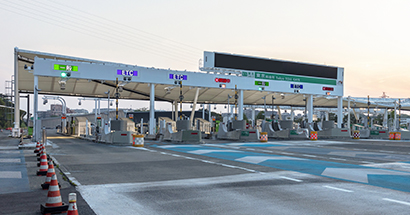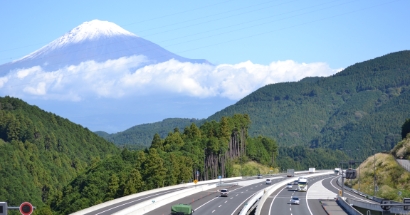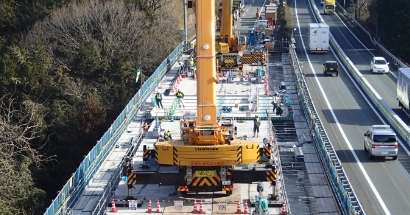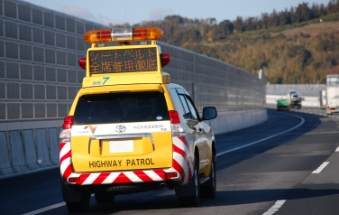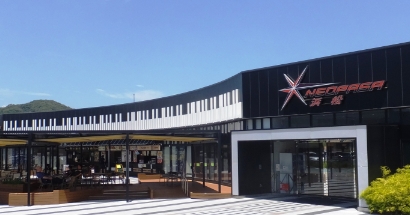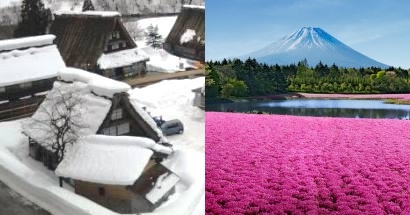Romaji Spelling Rules
NEXCO Central Nippon displays the names of interchanges, junctions and tollgates, etc. in romaji with readings based on the signage rules listed in the link below.
| あ | い | う | え | お | が | ぎ | ぐ | げ | ご |
| a | i | u | e | o | ga | gi | gu | ge | go |
| か | き | く | け | こ | ざ | じ | ず | ぜ | ぞ |
| ka | ki | ku | ke | ko | za | zi | zu | ze | zo |
| さ | し | す | せ | そ | だ | ぢ | づ | で | ど |
| sa | shi | su | se | so | da | ji | zu | de | do |
| た | ち | つ | て | と | ば | び | ぶ | べ | ぼ |
| ta | chi | tsu | te | to | ba | bi | bu | be | bo |
| な | に | ぬ | ね | の | ぱ | ぴ | ぷ | ぺ | ぽ |
| na | ni | nu | ne | no | pa | pi | pu | pe | po |
| は | ひ | ふ | へ | ほ | きゃ | きゅ | きょ | ||
| ha | hi | hu | he | ho | kya | kyu | kyo | ||
| ま | み | む | め | も | しゃ | しゅ | しょ | ||
| ma | mi | mu | me | mo | sha | shu | sho | ||
| や | ゆ | よ | ちゃ | ちゅ | ちょ | ||||
| ya | yu | yo | cha | chu | cho | ||||
| ら | り | る | れ | ろ | にゃ | にゅ | にょ | ||
| ra | ri | ru | re | ro | nya | nyu | nyo | ||
| わ | ひゃ | ひゅ | ひょ | ||||||
| wa | hya | hyu | hyo | ||||||
| ん | みゃ | みゅ | みょ | ||||||
| n | mya | myu | myo | ||||||
| りゃ | りゅ | りょ | |||||||
| rya | ryu | ryo | |||||||
| ぎゃ | ぎゅ | ぎょ | |||||||
| gya | gyu | gyo | |||||||
| じゃ | じゅ | じょ | |||||||
| ja | ju | jo | |||||||
| びゃ | びゅ | びょ | |||||||
| bya | byu | byo | |||||||
| ぴゃ | ぴゅ | ぴょ | |||||||
| pya | pyu | pyo |
All expressway names are in displayed in CAPITAL letters and location names in Title Case. In the event of the name being overly long (thereby affecting instant readibility), abbreviated forms can be used. For example,
| Type | Kanji characters | Hiragana | Romaji |
|---|---|---|---|
| Expressway | 東名高速 | とうめいこうそく | TOMEI EXPWY |
| Expressway | 京葉道路 | けいようどうろ | KEIYO ROAD |
| Location | 東京 | とうきょう | Tokyo |
| Location | 日本坂トンネル | にほんざかとんねる | Nihonzaka Tunnel |
The first letter of proper nouns are capitalized and for long sounds in Japanese the vowels are not doubled nor is a bar added above the vowel.
4-88
Hachi o ji →Hachioji
Koufu or Koofu →Kofu
Tōkyō → Tokyo
Only the first letter of common nouns are capitalized.
Fujikawa Riv. (in this case, a period is always used to show it is abbreviated) Lake Ashinoko
Shown below are the basic principles of how to write in Romaji (Hepburn System).
1) General matters
i)“―” or “∧” are not added to show long sounds. Also, "h" is not used to express long sounds.
太田町 Otacho
大手町 Otemachi
ii) The syllabic “ん” is expressed as n.
日本橋 Nihonbashi
新川 Shinkawa
iii) If it is necessary to divide the syllabic “ん” from the following vowel or "y", a dash is placed in between.
新尾頭 Shin-oto
新池町 Shin-ikecho
iv) Long consonants are expressed by doubling the first consonant. However, in the case of "ch", the "c" is not doubled but a "t"is used instead.
吉根 Kikko
仏地院 Butchiin.
2) Writing names of places
i) Place names are written in Hepburn as pronounced
京都 Kyoto
名古屋 Nagoya
ii)Names of prefectures on prefectural (102-1, B) signs are written as in the following examples.
東京都 Tokyo Met.
大阪府 Osaka Pref.
静岡県 Shizuoka Pref.
iii) Names of municipalities, etc. on municipal (101) signs are written as in the following examples.
福岡市 Fukuoka City
千代田区 Chiyoda Ward
中山町 Nakayama Town
大野村 Ono Vil.
iv) "Cho" names on 114 series signs, are written as in the following examples.
本郷三丁目 Hongo 3-chome
三の丸二丁目 Sannomaru 2-chome
4-89
3) Writing names of facilities, etc. (114 Series Signs)
i) Common nouns are written in English.
Facilities names are written as common nouns as stated in Remark 1 (1) 2 of the Signs Order, appended Table 2.
(Examples)
○○県庁Prefectural Office
米原町役場Maibara Town Office
松山空港Matsuyama Airport
岡山駅Okayama Station 横浜港 Yokohama Port
日比谷公園Hibiya Park
千代田橋Chiyoda Bridge
熱田神宮Atsuta Shrine
In the above examples, the name of a bridge itself, is written as Bridge, however, when expressing a town name, Bridge is not used.
千代田橋3丁目Chiyodabashi 3-chome
Also if in the name of parks, etc. park cannot be divided from the proper noun, it is written as in the following examples.
偕楽園Kairakuen Park
東照宮Toshogu Shrine
ii) River, Mountain and Lake, etc. included in the name of rivers, mountains and lakes, etc. are written as follows since they are part of names and cannot be divided.
木曽川Kisogawa Riv.
荒川 Arakawa Riv.
碓氷峠Usui Pass
芦ノ湖 Lake Ashinoko
立山Mt.Tateyama
松本城 Matsumotojo Castle
東大寺Todaiji Temple
木曽川橋Kisogawabashi Bridge
However, this is not applied if the name has already been written using a different method and this is well established.
富士山Mt.Fuji
琵琶湖 Lake Biwa
4-90
English signs for interchange names
The names of all interchanges displayed on expressway information signs are also written in English.
If “north, south, east and west” is added to the interchange name, such as “京都南”, or the names of 2 places are added together since the interchange is located in 2 different cities such as "甲府昭和", the names are written as follows.
1. For interchange names with “north, south, east and west”
(Example) English signs for interchange names
「京都南」“Kyoto-minami”
2. For interchange names where the names of 2 places are combined
(Example) English signs for interchange names
「甲府昭和」“Kofu-Showa”


